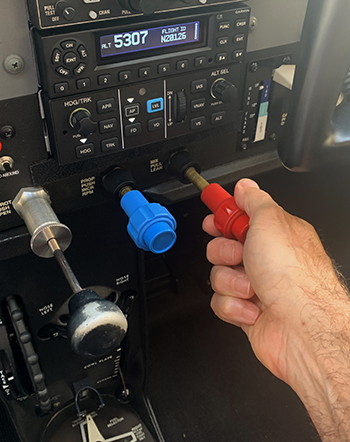Subscriber question:
"I understand leaning the mixture for cruise at altitude, but I've never been clear on what to do during descent. When do I enrichen the mixture?" — Paula T.
Jeff:

“I can’t fully answer this question with the brevity of a tip. And most POHs aren’t much help with ‘Mixture—ENRICHEN as required.’ But as long as you adopt a ‘Do no harm’ mantra, you have many options. Let me explain.
The discussion of the mixture knob starts with the power lever. Pilots generally fall into two categories: those who maintain cruise airspeed as they descend by reducing power, and those who maintain cruise power on the descent to get a faster airspeed.
If you reduce throttle for descent, you’re probably operating under 65 percent of the engine’s rated output. There’s no mixture setting that can cause harm at that low a power setting. My personal style with this kind of descent is to leave the mixture control alone, knowing the air-fuel ratio will get leaner as my altitude gets lower. I only enrichen the mixture when necessary to keep the engine running smoothly. When I level off and approach the airport, I set a full-rich mixture (or a mixture for maximum power if it’s a high-altitude airport).
If you descend at cruise power, the next question is whether you were cruising lean of peak EGT or rich of peak EGT. If you were operating lean of peak, the mixture will only get leaner with decreasing altitude, and you can use the same technique: Only enrichen enough to keep the engine running smoothly until transitioning all the way to full rich (or maximum high-altitude power).
If you were operating rich of peak EGT and then descend with cruise power, as many people do, the mixture getting leaner as you descend means you could create a power-mixture combination that’s harmful to the engine. That means you should enrichen as you descend, erring on the side of being too rich. If you’re unsure, just go full rich (or as needed for the high-altitude destination) early in the descent and be done with it. You’ll burn more gas, but you’ll have a high enough power setting that plug fouling shouldn’t be an issue.
Of course, all this assumes a normally aspirated engine. Turbos are a different story. Better engine instrumentation gives you more precise control. Maintaining sufficient engine temperatures could be an issue. There are many variables. Hopefully, this provides a good starting point.
Whatever you do, however, ensure the mixture is set for landing no later than downwind. Check again on final. You don’t want to discover the mixture setting is still lean when you apply full throttle on a go-around.”
How do you set power for descent?
